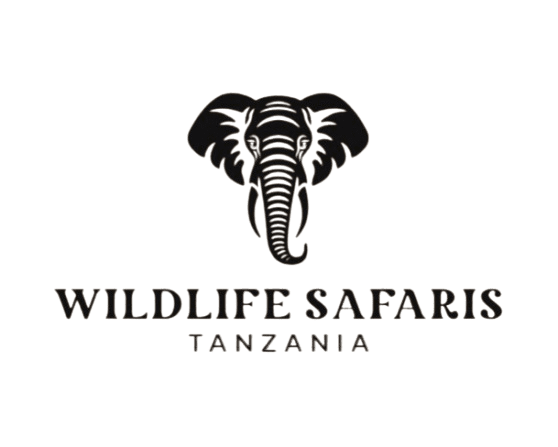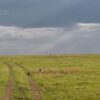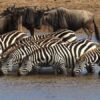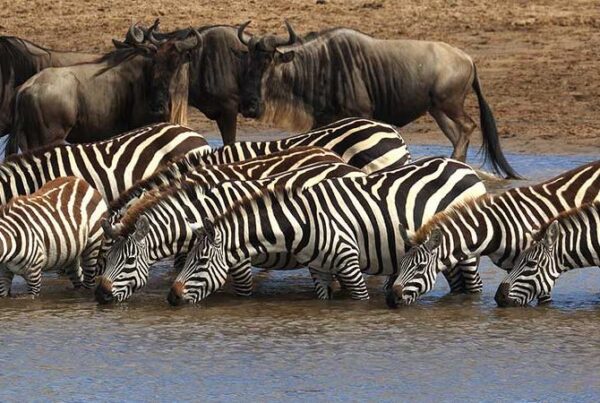The Great Migration: What, When and Where?
The story of the Great Migration has been told for generations, yet every retelling struggles to capture the sheer magnitude, drama, and breathtaking scale of one of the world’s most extraordinary wildlife spectacles. It is often described as Earth’s last surviving natural wonder that unfolds not on a stage crafted by human hands, but across the boundless plains of the Serengeti–Mara ecosystem. Each year, millions of wildebeests accompanied by zebras, gazelles, and an array of predators embark on a circular pilgrimage driven by ancient instincts written deep into their genetic memory. The journey, dramatic and perilous, becomes a living testament to the resilience of wildlife and the delicate balance of nature.
To witness the Migration is to experience Africa in its rawest form. Thunderous hooves shake the ground, dust clouds rise like smoke signals, predators stalk in the golden shadows, and riverbanks become arenas of survival where the line between life and death is measured in seconds. Few natural events match the intensity of this spectacle, and understanding what it is, when it occurs, and where it unfolds allows travellers to appreciate not only the magnificence of the moment but also the ecosystems that sustain it.
Uganda and Rwanda have their mountain gorillas, Botswana has its Okavango, South Africa has its vibrant private reserves, and Namibia has its deserts. Yet Tanzania and Kenya stand at the heart of a phenomenon so powerful that it draws the attention of researchers, filmmakers, and adventurers from every corner of the world. The Great Migration remains both a scientific marvel and a spiritual journey that defines the essence of East African safari culture.
Understanding the Great Migration
The Great Migration is often simplistically described as the movement of wildebeests from Tanzania to Kenya and back, but its reality is far more intricate. It is a continuous, cyclical event involving over 1.5 million wildebeests, nearly 300,000 zebras, and hundreds of thousands of Thomson’s and Grant’s gazelles, all moving in response to rainfall patterns and the availability of grazing. This phenomenon does not begin and end on specific dates. Instead, it unfolds like a vast living clock whose hands are made of hooves and whose gears are shaped by weather, predators, and ecological rhythms.
The wildebeest is the undeniable protagonist of this story. The species combines determination, instinctual intelligence, and evolutionary adaptation in a way that has allowed it to survive enormous challenges across millennia. Their migration is not merely a choice; it is a life strategy essential to the survival of the species. Their movement stimulates grassland regeneration, supports predators, and ensures that nutrients are cycled across an ecosystem that thrives because of them.
This massive movement can be understood as a constant search for nourishment. Fresh grazing and water are the engines powering this journey. The Serengeti–Mara ecosystem remains one of the few places on Earth with large, unfenced landscapes capable of sustaining such a scale of movement. The story of the Migration is written in the rains, and even slight shifts in weather patterns can influence the timing of major events. Scientists and guides often explain that the animals follow what can be described as the scent of rain, moving instinctively toward areas where new grasses bloom after fresh showers.
Predators are also part of this complex puzzle. Lions, cheetahs, leopards, hyenas, and crocodiles all play critical roles. Their presence ensures natural selection remains strong among the herbivores. The Migration is therefore not simply about movement; it is a dynamic ecological process in which every participant, from the smallest insect to the largest carnivore, contributes to the sustainability of the plains.
The Annual Migration Cycle
To understand when the Migration occurs, one must appreciate that it is a rolling cycle without a fixed start or end. Each phase blends into the next. However, its most dramatic chapters can be understood through seasonal progression, beginning in the southern Serengeti and ending in the Mara before looping back.
The earliest stage emerges with the calving season in the vast, open plains of the southern Serengeti and Ndutu region. This period, occurring between late January and early March, marks the arrival of over half a million newborn wildebeests. The expanse of the plains, flat and open, offers visibility and protection from predators. Yet the predators know what this season means, and lions, hyenas, and cheetahs are often found prowling the grasses in search of vulnerable calves. Despite the danger, the calving season symbolizes renewal, abundance, and hope. Tens of thousands of calves take their first steps each day, transforming the plains into a nursery of epic scale.
By April and May, the rains encourage the herds to begin moving northwest toward the central Serengeti. The grasses become tall and nutritious, creating a green corridor through the plains that encourages animals forward. The movement becomes more unified and determined. As the dry season approaches, the herds sense the need to continue progressing, and by early June, they are often seen funneling toward the Western Corridor.
This leads to the next crucial and highly dramatic phase: the Grumeti River crossings. Although not as globally celebrated as the Mara River crossings, the Grumeti crossings are equally intense. Huge Nile crocodiles lie in wait, and the deep, slow-moving waters create dangerous conditions for the migrating herds. Crossing the river is not optional. It is dictated by survival. The search for fresh grass demands that the herds press forward, no matter the challenges.
By July and August, the Migration reaches one of its most legendary chapters: the Mara River crossings. Here, the herds gather in staggering numbers along the riverbanks, pacing, hesitating, and gathering on ridges as if deliberating the risks. The Mara River crossings are unpredictable and can occur multiple times across different points along the water. The currents are strong, crocodiles lurk beneath the surface, and predators wait on the opposite banks. The scene becomes a display of chaos, courage, and instinct. The riverbank erupts with movement as thousands of wildebeests plunge forward. The splash of hooves, the cries of calves separated from their mothers, and the thunder of bodies fighting the water all combine to create a moment that is both tragic and profoundly inspiring.
After the crossings, the herds spread widely across the Maasai Mara. The ecosystem becomes a land of plenty during the dry months of August, September, and October. Here, grasses grow abundantly due to the Mara’s more consistent rainfall patterns. Predators thrive, and life pulsates through the savannah in its most concentrated form.
Finally, as the short rains return in late October and November, the instinctual call of the Serengeti begins to pull the herds back southward. The journey back unfolds through the eastern Serengeti, bringing the cycle full circle. By December and early January, the southern plains once again become the nursery where new life begins. This reflexive journey symbolizes resilience, continuity, and the timeless passage of generations.
Where the Great Migration Happens
The stage on which the Migration unfolds is as magnificent as the event itself. Spanning the Serengeti of Tanzania and the Maasai Mara of Kenya, this ecosystem stretches across nearly thirty thousand square kilometers of uninterrupted wilderness. The diversity of landscapes encountered along the way—endless plains, rolling hills, rocky outcrops, woodlands, seasonal swamps, and winding rivers—creates a visual tapestry that enhances the experience of following the Migration.
The Southern Serengeti and Ndutu region mark the birthplace of new wildebeest generations. These plains, wide and uninterrupted, provide the perfect backdrop for calving and early development. Predators roam these grasses in large numbers, but the openness of the landscape offers visibility crucial for survival.
The Central Serengeti becomes a transitional region where the herds gather and feed heavily as they prepare for the long journey toward the west. Known for its resident wildlife, this region provides an incredible setting to observe predatory behavior amidst the moving herds.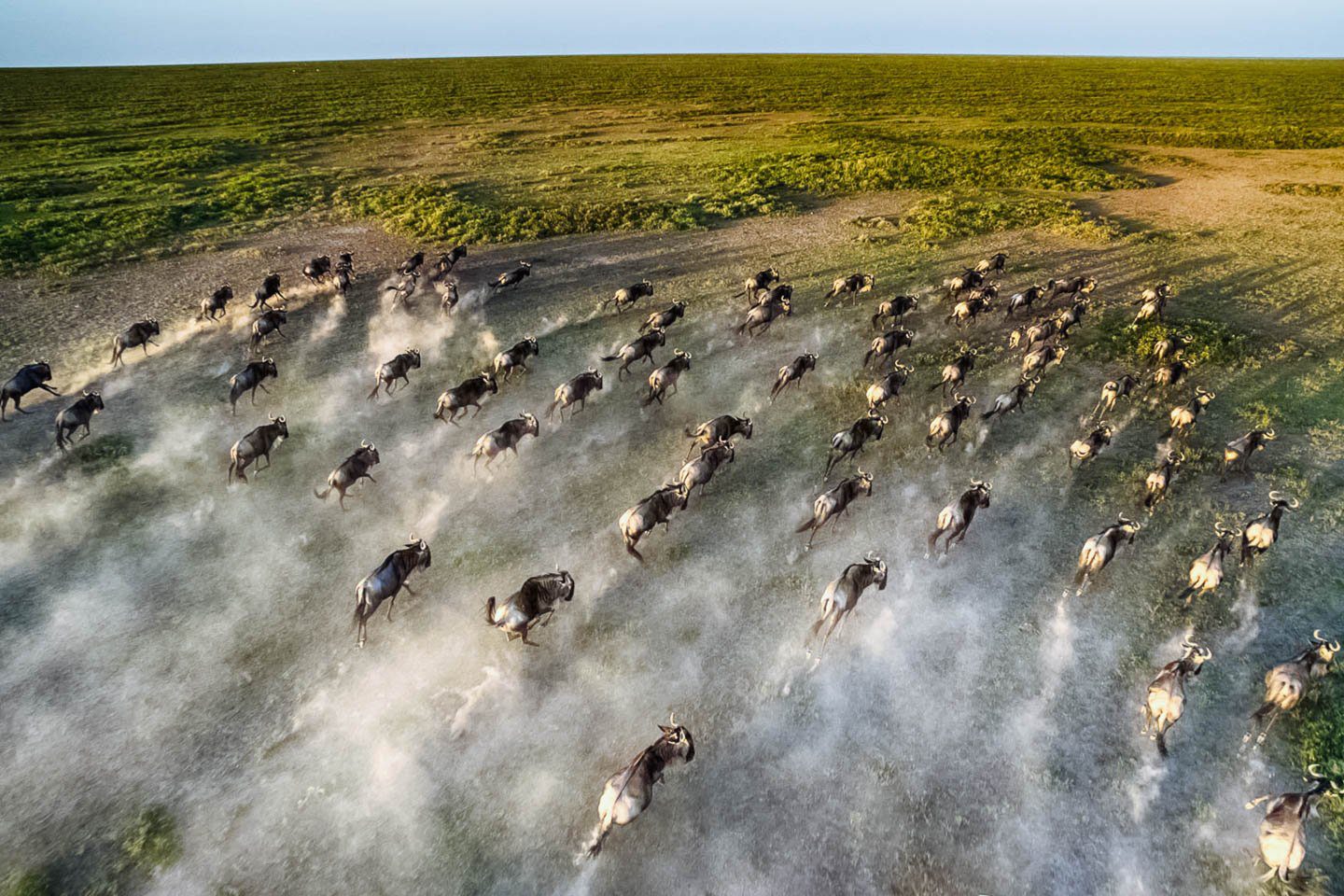
The Western Corridor presents challenges in the form of the Grumeti River. The woodlands, swamps, and rivers found here shape the dramatic chapter of the river crossings that precede the journey north.
The Northern Serengeti, characterized by its rolling hills, granite kopjes, and acacia-lined rivers, is the location where the drama intensifies before the herds spill into Kenya. The Mara River winds through this landscape, creating a series of crossing points where the most spectacular scenes unfold.
The Maasai Mara becomes the stage of abundance, where wildlife converges in staggering numbers. The combination of grassy plains, gentle rivers, and higher rainfall patterns sustains the herds during the dry season, turning the ecosystem into one of the world’s most vibrant wildlife havens.
The Ecological Importance of the Migration
The Great Migration is not merely a tourist attraction; it is a fundamental process sustaining the entire Serengeti–Mara ecosystem. The movement of over a million grazing animals ensures that grasslands are continuously regenerated. Heavy grazing stimulates the growth of fresh grasses, while trampling helps cultivate soil nutrients. Their droppings enrich the land, supporting micro-organisms and plant life. The presence of the Migration supports not only herbivores but also apex predators, scavengers, insects, and birds, all of which thrive on the rich ecological chain sustained through constant movement.
Predators, especially lions and hyenas, depend heavily on the Migration for food. Their populations rise and fall in correlation with the movement of the herds. Large cat prides are often witnessed multiplying during years of abundant prey, and researchers note that the health of predator populations offers insight into how well the Migration ecosystem is functioning.
The rivers too are influenced by this movement. Crocodile populations have evolved to correspond with the rhythm of the river crossings. Fish populations benefit from mineral deposits carried downstream, and aquatic vegetation thrives due to the nutrient cycles introduced by migrating animals.
The Migration is also vital in supporting local communities whose livelihoods depend on tourism, conservation jobs, and sustainable natural resource use. The revenue generated from safaris, park fees, and conservation projects helps maintain the ecosystem and protect it from poaching or encroachment.
Human Experiences of the Great Migration
Visitors who witness the Migration describe it as a life-changing experience, and the reasons behind this sentiment run deeper than the spectacle itself. There is something transformative about watching millions of animals moving together under the African sun, responding to ancient instincts that have guided their ancestors for thousands of years.
The sense of scale is overwhelming. The sound of hooves rolling like distant thunder, the sight of dusty horizons shifting with movement, and the emotional surge felt during river crossings awaken something profoundly human. Witnessing the Migration often leaves travellers with a renewed appreciation for the fragility and resilience of life.
Guides and conservationists who spend years tracking the Migration speak of it with reverence. The stories they share, the tracks they read, and the behaviors they interpret offer an intimate connection with the wild that amplifies the visitor experience. The human role in the Great Migration narrative is not merely observational; it is an essential part of ensuring that the ecosystems remain protected for future generations.
When to Witness the Migration
While the Migration is a year-round phenomenon, certain periods offer more dramatic spectacles. The calving season provides a serene, emotionally moving experience where new life emerges in overwhelming numbers. The Grumeti River crossings introduce risk, danger, and unpredictability. The Mara River crossings offer the climax of adrenaline and endurance. And the period spent in the Maasai Mara provides the chance to observe wildlife in dense concentrations that are rare anywhere else on Earth.
Visitors planning their safari often choose their timing based on what chapter of the Migration they wish to witness. However, it is essential to understand that nature does not operate on fixed calendars. Rains may arrive early or late. Herds may shift unexpectedly. This unpredictability contributes to the magic of the Migration. Every moment feels unscripted, raw, and real.
Experienced guides and safari companies help travellers navigate this uncertainty by adjusting routes, tracking herds in real time, and selecting camps strategically positioned near migration routes.
A Natural Wonder That Lives Beyond Words
The Great Migration continues to stand as one of the last untouched stories of wild Africa, unfolding each year with unrelenting energy and poetic rhythm across the Serengeti and Maasai Mara. It reflects the profound harmony of nature, the timeless struggle for survival, and the awe-inspiring resilience of wildlife. Its vastness humbles travellers, its drama captivates hearts, and its cyclical nature reminds humanity of the delicate balance that sustains the living world.
For those yearning to witness this magnificent spectacle, the journey begins with choosing the right partners who understand the land, the wildlife, and the rhythms of the Migration. It is recommended that travellers planning a Migration safari book their African wildlife experiences through Wildlife Safaris Tanzania, a trusted expert in guiding guests through the landscapes where the Migration leaves its unforgettable mark.
